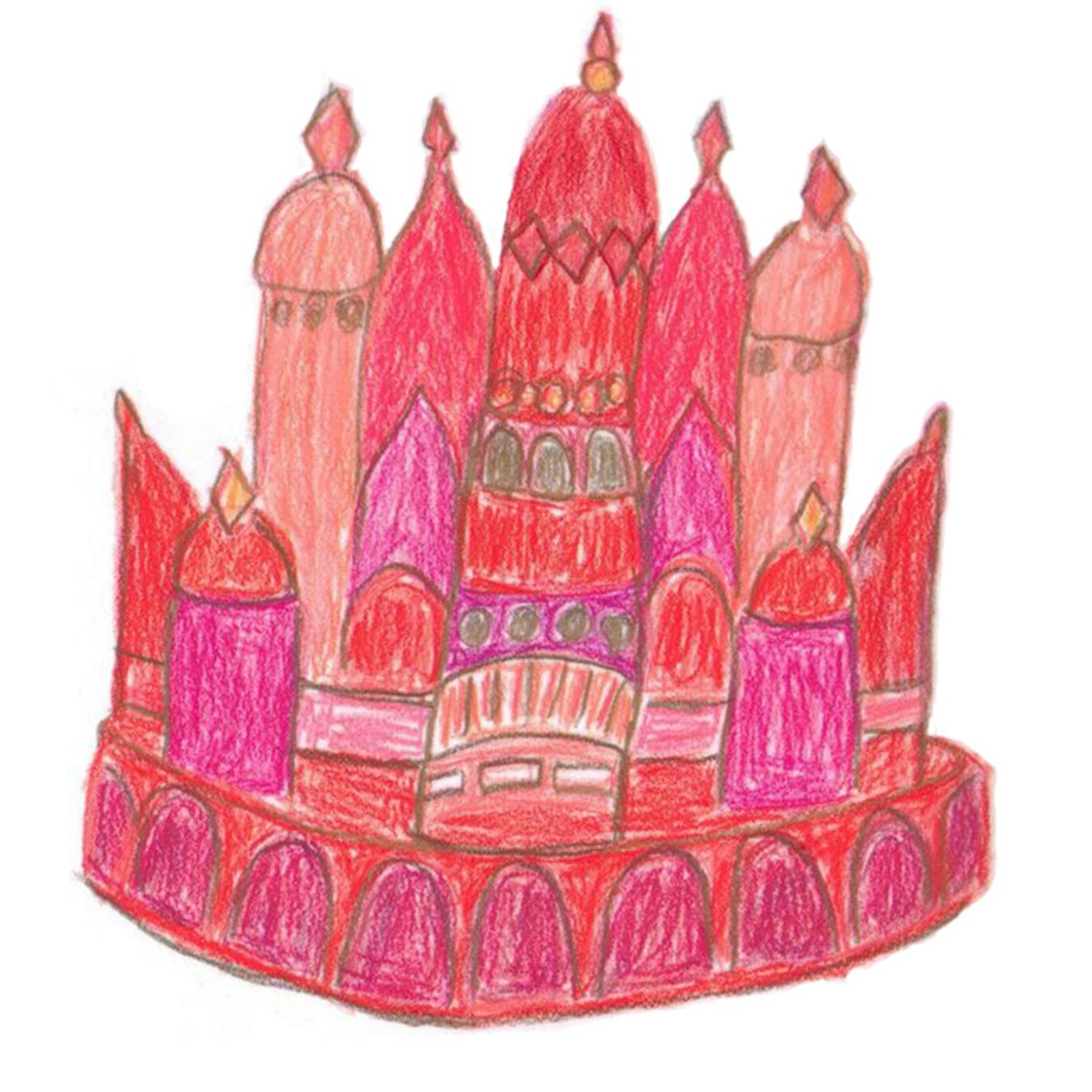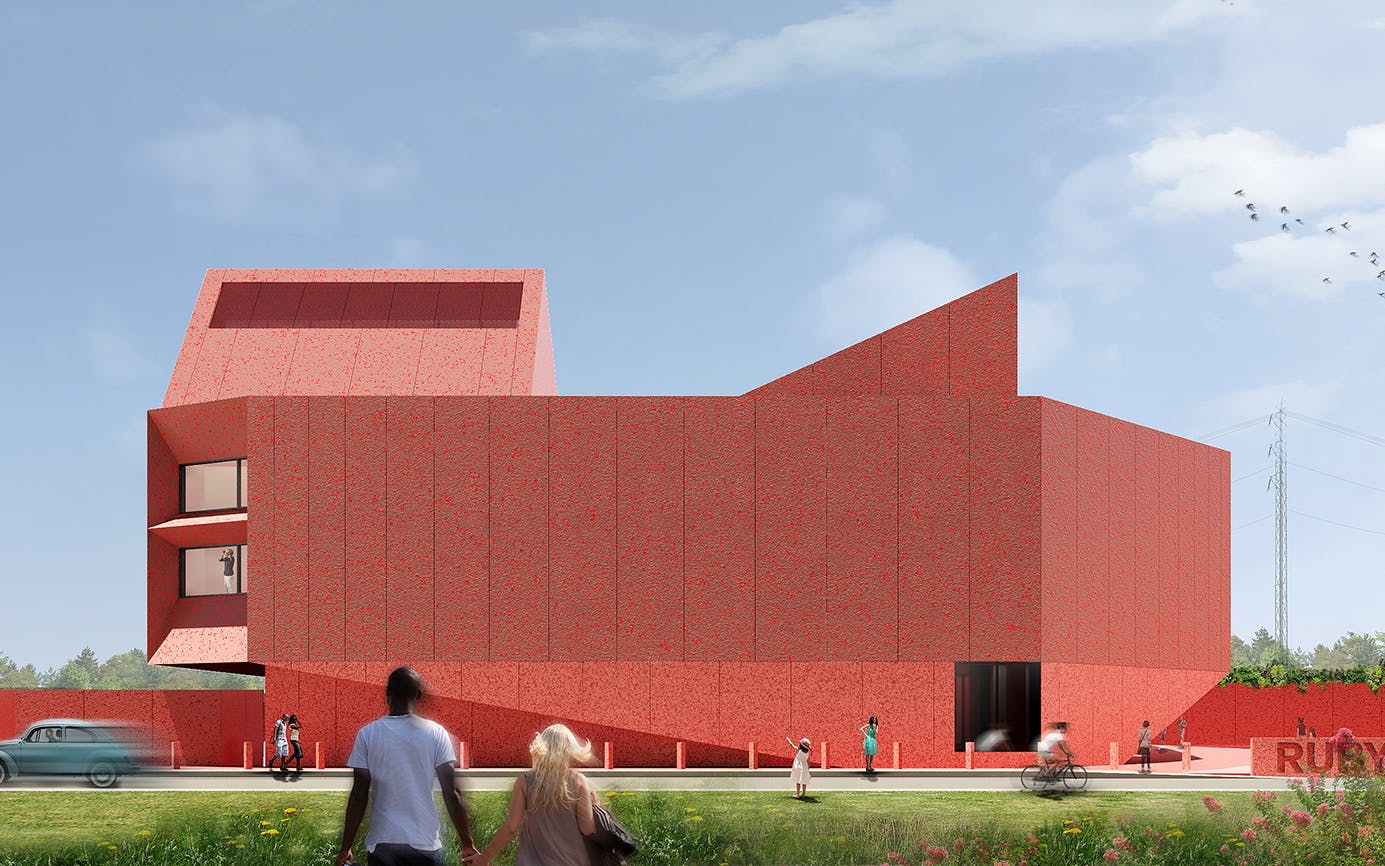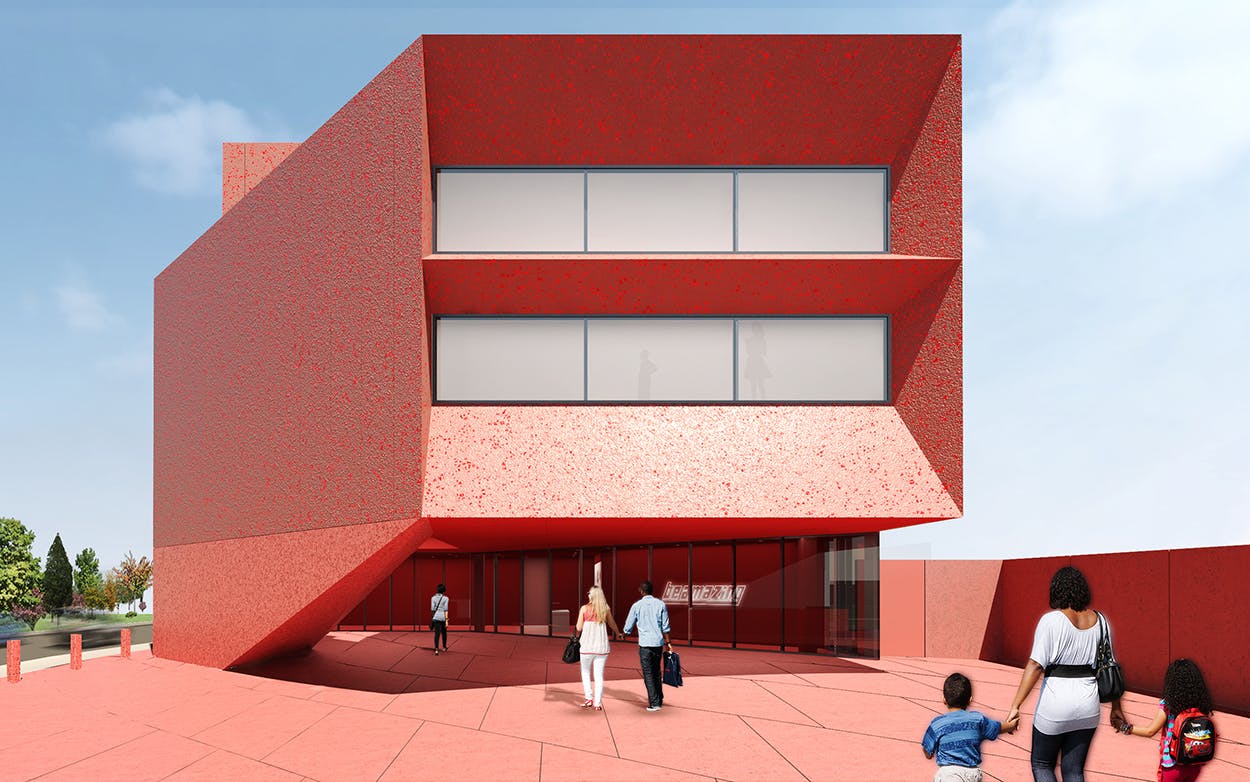Since the 2016 debut of his powerful National Museum of African American History and Culture in Washington, D.C., British architect David Adjaye has become the rock-star international architect du jour, the hottest thing in his profession since four walls and a roof. Last week, Texas got a glimpse of its first Adjaye creation, as the Tanzanian-born, Ghanaian-by-descent Knight Bachelor of the U.K. touched down in San Antonio to give a public lecture and throw open the doors to his latest creation, a free, open-to-the-public art center called Ruby City, which will open officially in October.
Perhaps a thousand fans, art mavens, and civic-minded San Antonians were on hand for the lecture at Trinity University. Despite the big-shot résumé, Adjaye comes across as self-effacing yet erudite onstage and precise and considered in his work. He described his new building in San Antonio, built for the Linda Pace Foundation, as a “little temple of art,” and “a kind of very shy building” that is constantly hiding and revealing its face. After the talk, some of that shy act was dropped as Ruby City was inaugurated with cocktails, passed appetizers, valet service, and live harp music.
The origin story of Ruby City is a long and fascinating one. Its benefactor, Linda Pace, heiress to the San Antonio hot sauce fortune and long-time patroness of the arts in Texas and beyond, had a dream while she was sick with the breast cancer that would take her life in 2007. She saw a sort of mushroom clump of bright red minarets, and dashed off a sketch immediately upon waking. She understood it as a vision of the building that would someday house her art collection. She sent it to Adjaye, then a young up-and-comer whom she’d met through the artist Isaac Julien. Adjaye was tasked with interpreting the drawing and bringing it to life as a building optimized for the presentation of a collection of artworks ranging from traditional wall hangings to multi-channel video and sculpture.

“When I got the sketch, I felt like, ‘Oh, this is a puzzle,’” Adjaye says. But it didn’t take him long to get a read on it. “It seemed to unlock itself for me. I thought it was a kind of dense poem.”
The result, on Camp Street a block from Interstate 35 in downtown San Antonio, is worthy of its opening day buzz. Ruby City is not a big building, but its gestures are ample, purposeful moves intended to tune visitors in to a deeper sensitivity to light, to seeing, and to the wonder of the creative process. From the outside, it’s a double-cantilevered structure—raised up off the earth on two of its four sides—decked in red concrete specifically engineered in Mexico to withstand the elements, not least of all the bleaching Texas sun. The roofline is angular and articulated, and large, showpiece windows are visible from any vantage point. The color and wide-set form are intended to remind one of the region’s clay-filled earth. At the same time, the upward movement of the cantilevers helps direct the imagination to the sky and to sunlight, which will be the preoccupation of the building’s interior. There’s also an outdoor sculpture garden and talk of expanding this area into a larger public plaza and amphitheater with access to trails along San Pedro Creek.
Ruby City’s interior is dominated by three large second-story rooms. Each is conceived in homage to a different type of artist’s studio. This notion is particularly appropriate to Linda Pace’s legacy; Adjaye notes that Pace was known for her sensitivity as a collector in studio visits, the interest she took in process as an artist herself, and the way she brought out the best in the artists she commissioned. “Most artists’ studios, if you’re lucky enough to visit, are magic places,” he says. “There’s always a kind of a sense that somehow there’s an incredible alchemy happening.”
The first and largest of the three principal rooms that museum visitors will encounter has a pitched roof that doesn’t quite meet at the top; a row of vertical windows admits light through the space between the two non-intersecting slopes. This room is meant to suggest a converted shed or barn artist studio. The next room has big walls that feel much closer together and one very high window; this evokes an industrial space subdivided for art-making. Adjaye describes the final room as an “art cube.” If it were an artist’s studio, it might have been custom-built for that purpose. As a place for displaying art, it is the only principal room at Ruby City that does not admit “zenithal light” (one of Adjaye’s favorite phrases) through the ceiling, and so it’s ideal for video displays, several of which are included in Pace’s collection.
The last room also boasts a panoramic window looking out on the sculpture garden to the interstate-fronting commercial strip beyond. “If you look down, you get this fantastic view of what I’m calling the produce of twentieth century culture,” Adjaye jokes, referring to the Church’s Chicken, Travelodge, and McDonald’s by the highway.
This raises the question of context. Unlike the National Mall in D.C., the western fringe of downtown San Antonio is not yet a rarefied architectural environment. Yes, the Blue Star Arts Complex is only a few blocks away, along the River Walk, and several high-end condos and restaurants have recently opened nearby. But for now, Ruby City sticks out above its highway-fronting neighborhood like a very red thumb. One must squint to see it as Adjaye envisions it, after future improvements to the outdoor environs of the museum, connecting it to an increasingly pedestrian-friendly and culturally activated city.

Still, one can only credit Adjaye’s work to renew and replenish San Antonio’s sense of unique architectural destiny and identity after decades of sprawl. He speaks eloquently of how he views creativity as learning about the past and present, and how that understanding can saturate our art and how we make and inhabit buildings. He quotes an Ashanti proverb often repeated by his father: “You cannot enter the future without going back to the past.” So, initially with Pace as a guide, he made study of San Antonio’s architectural heritage, through native, colonial, and early American phases, with special attention to the city’s connection to water sources and its Mission history.
In this sense, his precise use of light in Ruby City is also meant to echo the way light travels through colonnades. The circuitous path he has designed for visitors to travel through the space is meant to reenact the meditative strolls that earlier generations of San Antonians might have taken around their religious structures.
Adjaye has also carved out a moment for visitors to be misdirected into a small room with a big window honoring the city and his patron, after ascending the staircase into the main part of the museum but before entering the three big gallery spaces. “I pull you to this façade because it gives you a view of the skyline of San Antonio, but also more importantly Chris Park, which was a very important park for Linda,” Adjaye says. The small park is named for Pace’s son, who died in 1997.
“It’s really a kind of memorial space for me,” Adjaye says. “I wanted to make a space that was a moment to just reflect on Linda and the city that really made her who she is, and the gifts that have come from her story.”
- More About:
- Style & Design
- Art
- Architecture
- San Antonio






